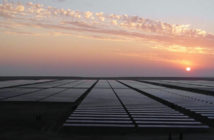Large numbers to illustrate policy ways and means do not, usually, speak to the average voter. And up to a point, they are right not to care whether the Compensation Fund increased to some MAD 32 Bn, first off because even the most civic-spirited citizens of us cannot put together a detailed account of how much it would benefit them, and second because for all governmental policy and its supposed benefits on all of us, it takes a while, and a certain approach to convince people that these taxes are well spent, and these actually benefit them.
I used to convince myself that a successful political party in Morocco can win favours with some “populist” lines on income inequality and wealth. I wish we had some serious polling companies (and a more relaxed set of regulations) to gauge the mood of the nation regarding the introduction of progressive taxation on dividends, large agricultural businesses, real estate tycoons, grima-holders. In a curious, almost virtuous ring, populism, high-brow policies and sound economic decisions have been united in one singlefiscal policy: wealth taxation. I mentioned in an earlier post the possible levy of at least MAD 45Bn by introducing a 60% tax rate on millionaires. As a matter of fact, that measure is net of a tax break which would benefit directly to the 20% less affluent, and 60% of total households. The following is an effort to breakdown those measures into real, individual impacts.
But first off, some macro-figures are needed to illustrate why wealth taxation is necessary, and could actually help stem inequalities and boots domestic economy. The cornerstone of governmental policy is twofold: first, the introduction of wealth tax regime, and the implementation of discriminatory (in the pure economic definition) VAT and Income Taxes. Based on the assumption revenue distribution evolves within the observed trend of the last decade, and following available figures on GDP growth and the 2011 Budget, we can establish the following windfall receipts from the new changes in income and VAT taxes: out of some 5,210,000 urban households, distribution between income structure and paid income tax shows a marked discrepancy, an injustice that should be dealt with swiftly by re-arranging the income brackets.
It can be observed that even with a uniform distribution of individuals across households deciles, the 20% richest do not pay taxes commensurate to their incomes, while the less affluent households do pay comparatively more. This is mainly due to the virtual tax break for all households earning more than MAD 180,000 (though actually, the tax break starts at MAD 165,000) which means individuals earning on average MAD 500,000 and up (the top 10% bracket) earn a tax-free Dirham when they turn millionaires. The tax subsidy goes even worse, and conservative estimates, the tax receipts from the introduction of progressive tax policy will be quite large.
a family of 5, with one breadwinner and a stay-at-home mum is likely to earn, on average MAD 59,642 per annum. They are likely to pay MAD 3,900 i.e. about 7% actual tax contribution -These, by the way, are households HCP officials refer to as “the middle class”. A smaller household (say of 4 members), with two working co-heads of household earning MAD 560,000 per annum pay in taxes MAD 44,000. Both households pay comparatively the same percentage of their income in taxes. The income ratio however, is 1 to 9. The super-rich are on average paying less than the middle class in terms of income taxes, and we are considering only their non-agricultural incomes. Any fiscal reform that shifts the burden from 40% of households to a minority within the 10% more affluent is not only a progressive policy, but would also most certainly bridge income gap. The other implication of such fiscal reform would necessarily increase all 60 to 80% of households’ standards of living.
Am I too greedy with the super-rich? Am I? Following their 2010 financial statement, listed companies on Casablanca Stock Exchange (and thus required to publish their financial statements with the CDVM regulatory body) have distributed in 2010 about MAD 27 Billion of dividends. Considering how concentrated the shareholding structure is in Morocco, these dividends simply do not benefit to the many, but only to the (already rich) few. Besides, tax code regulations to that day do not seem to tax these dividends. Indeed, under Art.6 subsection C regulations, company shareholders registered in Morocco (that is, virtually all of BVC listed companies) do not pay income tax on at least 95% of their earnings. A financial tax of of 65% over these earnings (as well as the rising of the legal reserves ceilings) can provide the budget with an additional MAD 17 Billion receipts.
Agricultural income is not taxable in Morocco. It is argued that since the strategic sector has been agriculture, and since this economic sector has suffered severe setbacks due to a series of droughts, farmers should not be burdened with taxes; Up to a point, the argument is valid and seems economically sound; nonetheless, the legislative process that exonerates farms from taxes is a pure royal fiat decision, one that comes back every couple of years. Lately, His Majesty decided to postpone the end of farm tax exemption till 2014. The second argument is economic: are all farmers benefiting from the tax exemption? Evidence from estate conservation and ownership concentration most certainly suggest that the answer is no, only a super-privileged few are benefiting from the moratorium.
Following the latest agricultural survey (1996) there is a huge concentration around large farms. As a matter of fact, 12.3% of farmers own about 67.1% of total area (Surface Agricole Utile) and every one of them owns more than 12,000 ha. It is even more interesting to note that those owning the largest farms are 5 times more likely to be urban dwellers, rather than established farmers (respectively 66.4% and 13.9%). Under assumptions of stabilized total agricultural surface, uniform returns over areas, and bearing in mind the That agricultural GDP was in 2010 about MAD 95.30 Billion, and assuming commensurable distribution in GNI distribution, total income generated was MAD 121.53 Bn. Assuming only those farmers with 10,000 ha and above are subjected to a low, indiscriminate tax rate of 12%, gross generated income would amount to MAD 12 Bn, all of which could be used in favour of smaller farmers, or at least to fund the necessary agrarian reform (a proposal to consider instead of Plan Maroc Vert shambles) because, quite frankly, it is high time we have dealt with the intricacies of estate status that do not benefit to communities. Just ask the Soulalyates:
http://www.dailymotion.com/swf/x9vu31
What would happen if indeed the lower bracket was to benefit from a tax cut that basically eliminates the 10% lower tax threshold? Obviously income to some 40% households -the worse off- would increase significantly from MAD 600 to MAD 4000 per annum. This does not mean their consumption would increase accordingly. Let us consider some households to make the point.
Let us consider a family of 7 members household with a total annual income of some 33,000 dirhams. They are likely to spend some 18,000 in food, 97% of which mainly devoted to the following items: crops and derivatives (MAD 3,000) Meat (MAD 1,900) Fruits and Vegetables (MAD 1,800). Not enough of course to get a healthy meal, since consumption of milk and derivatives, for instance, is too low (MAD 400) even Meat consumption does not rise to expectations. Fortunately, in the event of tax breaks in favour of this household and many others, there are ways to anticipate how much is going to be spent on food and other items. But for the time being, let us concentrate on domestic food consumption;
Most likely, milk and meat consumption are going up, then less so edible oil, fruits, vegetables and sugar. Now, since we are considering a tax break of 300 dirhams, crop, bread and other derivatives consumption does not increase much (no more than 20 dirhams as a matter of fact) So sceptics can put to rest any criticism that a tax break to the poor would increase our crop imports, or put a further strain on the Compensation Fund’s finances. The good news is that the benefits of tax relief would lead to an increase in consumption of what many Moroccans view as “luxury goods”: meat, milk and fruits. Indeed, even though national capacity might not satisfy meat demand, fishery resources can more than make up for the shortfall (fish-made flour can be a valuable auxiliary to improve standards of living too); in any case, this household would, in all likelihood, increase its consumption of meat to MAD 1,940 per annum. Of course, these numbers do not show marked improvement, but suppose that universal benefits scheme was introduced, and that household was to benefit from a MAD 700 boost: meat consumption goes up to MAD 2,000, and same story goes with other items: sugar consumption goes up to MAD 680, fruits and vegetables to MAD 1,900. The conjugated effect of tax breaks and a MAD 700 cash contribution increase, overall consumption of the 10% worse off some increases from MAD 9,600 to 9,800 in the most conservative estimates (indeed, these numbers have been computed with nation0wide wealth elasticity, even though poorer households tend to consider almost all food classes to be luxury goods)
 Nota: ratios are 10% top to 20% bottom. all computations are based on income earned by urban households
Nota: ratios are 10% top to 20% bottom. all computations are based on income earned by urban households
Indeed, tax breaks and cash relief work pretty good to the extent that they not only increase food consumption to better standards, but also bridge the gap between poor and rich households’ consumption, and that is particularly true for all food classes, and not only the Giffen goods; Families of 7 and less that belong to low median income, i.e. who earn less than 7,200 a month can witness substantial increase in their consumption (from an average of 27,000 per annum to 31,000) as well as a narrowing gap with the upper, families of 3 and less from the top 10% income bracket.
The great news for business is that this increased demand is more than likely to fulfil its needs in domestic markets: lower and middle classes tend to consume locally, and because production capacity is so underused, there is little danger of inflationary pressure, contrary top what might be expected. Inflationary demand is usually triggered by more powerful consumers, in a mass consumption society, two features that do not show in national consumption pattern.
What seems to hold for food consumption equally applies to other classes. Indeed, tax reforms, for all the fairness it achieves, also allows ordinary Moroccans to reach a better class, higher standards of living, and by narrowing income and wealth gaps, a major risk of social resentment is taken away. I do not believe these policies to be socially divisive if they do benefit to 60-80% of Moroccan households, are they?








